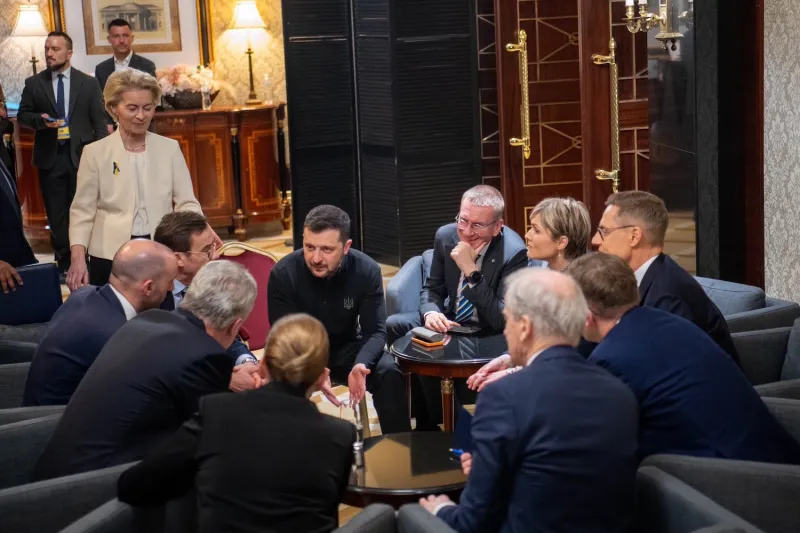Europe for last three years has been crying its eyes out for Ukraine, declaring it in every summit that we stand strong with Kyiv against brutal invading forces of Russia. But now a report released by Ember, a think tank, has punctured this fake narrative of Europe. The report reveals that Europe has spent more on Russia, more on aiding Russia’s economy, than on Ukraine. Last year, Europe purchased gas worth $23.6bn from Russia.
You see, when China and India buy oil or gas from Russia, these nations are accused by Europe of directly funding Putin’s war machinery. Going by that logic, Europe itself is funding the war against Ukraine. On the other hand, Europe spent just $20 billion on Ukraine last year.
Data reveals that Europe might be shifting back to Russian gas three years after the war. Yes, when the war started, the same Europe declared that we will phase out Russian gas completely within 5 years. Last year, they increased import of Russian gas by 18 per cent.
And according to experts, Europe will import even more Russian gas in the ongoing financial year. The reason? The US can’t provide more and also, there are concerns in EU nations that Trump officials may use gas exports as a tool in the ongoing trade war. The tariff war between US and EU has turned ugly. Because of that, several EU firms are now pressing their governments to shift back to Russian gas.
Europe has limited options. Talks with LNG giant Qatar for more gas have stalled, and while the deployment of renewables has accelerated, the rate is not fast enough to allow the EU to feel secure. You see, in latest federal elections, almost a third of Germans voted for Russia-friendly parties. So, trade with Russia is not a taboo topic for Germans.
This is one major sign that Russian economy is soon going to see a bigger boost in coming months.
And now, let’s talk about another major sign.
It’s about Russia’s currency ruble. The Bloomberg has labelled ruble the world’s top-performing currency this year, outpacing even gold, can you believe it.
The ruble has seen a dramatic 38% surge against the US dollar this year, making it the top-performing currency globally. It has even outpaced gold, which typically acts as a safe-haven asset and has climbed 23% to all-time highs since January. Experts attribute the ruble’s rise to a mix of geopolitical developments, tight monetary policies from the Bank of Russia, and broader global economic shifts.
One key factor has been Russia’s decision to raise interest rates sharply to combat inflation. In October, the central bank increased its benchmark rate to 21% and has maintained it since. These high borrowing costs have suppressed demand for imports, reducing the need for foreign currencies. Additionally, regulations requiring exporters to convert part of their earnings into rubles have further bolstered the local currency.
Another major influence has been improving diplomatic ties between the US and Russia, driven by joint efforts to find a resolution to the Ukraine conflict. This thaw has renewed foreign investor confidence in Russian markets. According to Iskander Lutsko of Istar Capital, global investors are increasingly looking to countries with stable relations with Moscow to access high-yield ruble assets. He believes the current favorable conditions for the ruble are likely to remain for the foreseeable future.
This ruble strength also coincides with weakness in the US dollar, which recently fell to a six-month low. The drop followed President Trump’s announcement of sweeping “reciprocal” tariffs on nearly 90 countries, targeting what he described as unfair trade practices.
You see, these signs are quite telling. No matter how much propaganda about Russian economy is pushed and peddled by Western media, the reality is that Russian economy is going to expand drastically in coming years. The three years of Western sanctions have been bravely defeated by Russia.








